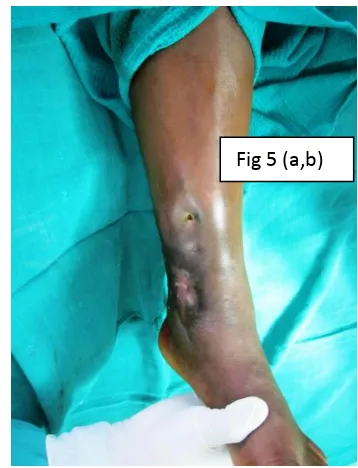Outcome of Minimally Invasive Percutaneous Plate Osteosynthesis (MIPPO) using medial distal tibia anatomical locking compression plates for distal tibia fractures: A Prospective study
Full text
Figure




Related documents
Background: Our hypothesis was that minimally invasive plate osteosynthesis (MIPO) using long philos plate (LPP) would show better clinical and radiological outcomes and
Hence, this study evaluated the functional and radiological outcome of internal fixation with volar plate osteosynthesis in the management of unstable fractures of distal end
: Minimally invasive plate osteosynthesis with a locking compression plate is superior to open reduction and internal fixation in the management of the proximal humerus fractures.
Proximal tibia fracture, Extra articular fracture, Minimally Invasive Plate Osteosynthesis, Interlocking intramedullary nailing, Knee Society Scoring System, Johner & Wruhs’
Our study comprised of 20 patients with distal femur fractures who were treated by locking compression plate (LCP) using open reduction (ORIF), and minimally invasive
32 patients with fractures of the distal tibia treated using Locking compression plate with MIPO technique were included in the study.. All patients with distal tibial
To analyze the functional outcome of proximal tibial fractures treated with minimally invasive percutaneous plate osteosynthesis technique.. Sivakumar Arumugam 1 *,
Babst, Locking Compression Plate with Minimally Invasive Plate Osteosynthesis in diaphyseal and distal tibia fracture: A retrospective study of 32 patients, Injury; 38(3): 365-370




